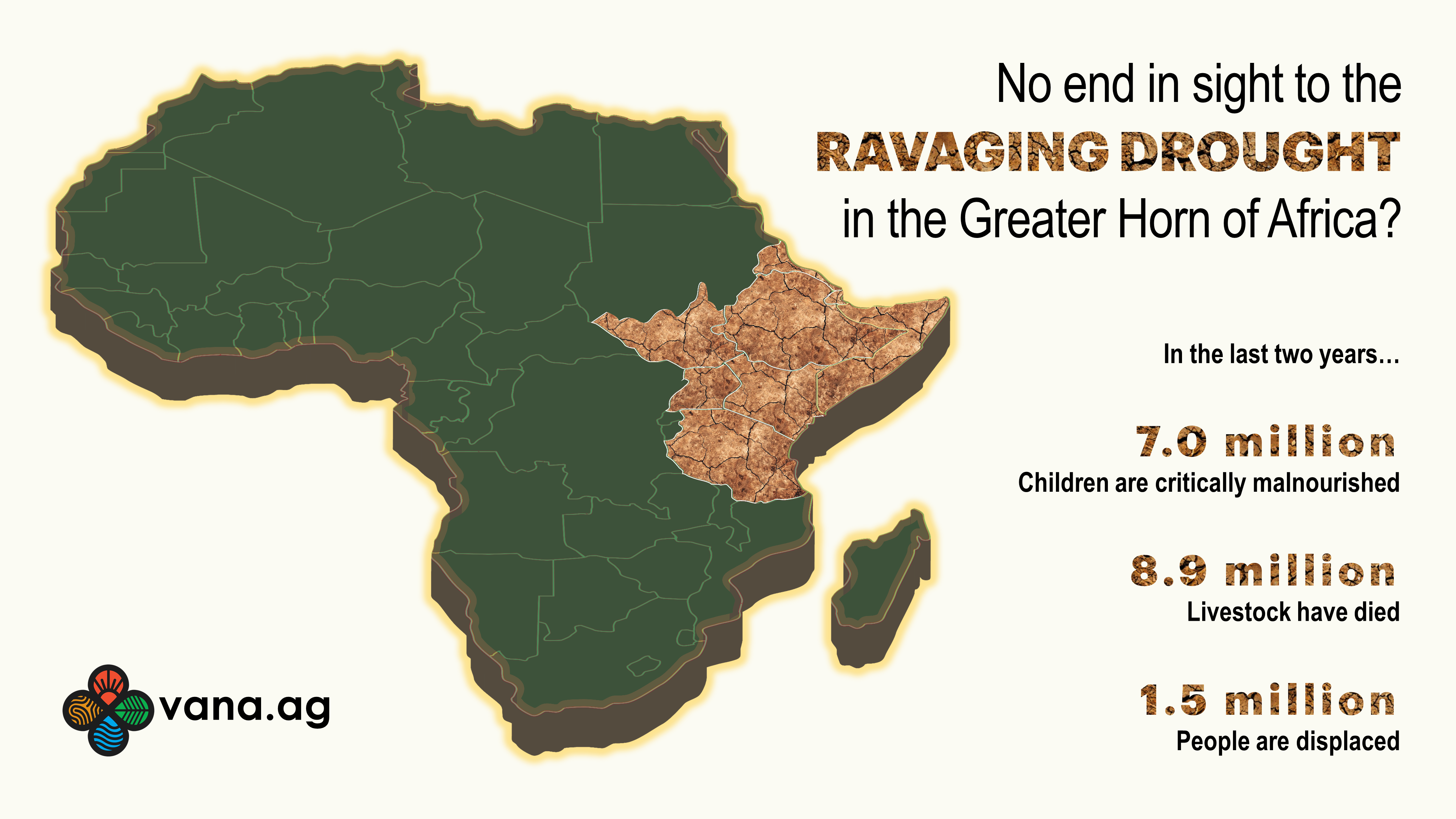
NO END IN SIGHT TO THE RAVAGING DROUGHT IN THE GREATER HORN OF AFRICA?
The Greater Horn of Africa includes the territory of East Africa which stretches from Eritrea in
the north, through Ethiopia and Djibouti, to the southernmost tips of Kenya, and Somalia,
and parts of South Sudan, Uganda, and Tanzania. The region is on the brink of an
unprecedented humanitarian catastrophe as it is going through one of the worst droughts in
the last 40 years. Since late 2020, the Greater Horn of Africa has experienced five
consecutive failed rainy seasons, worsening the drought and affecting most of its population.
The drought depleted the soil moisture, dried the waterways, and left millions of livestock
dead.
Earlier research suggested that 2016 was the driest year in the last four decades. The 2016
drought occurred after a particularly intense El Nino event, during which warmer and cooler
water patterns in the Pacific Ocean changed, impacting the Indian Ocean and eastern
African rainfall. Ethiopia, Somalia, and Kenya received 40% less rainfall between August and
October than the long-term average. But the drought in 2020 surpassed this and turned out
to be the worst drought ever experienced.
Millions of people are facing acute hunger due to drought compounded by years of conflict,
instability, and rising international food and fuel prices due to the impact of the COVID-19
pandemic and the Russia-Ukraine War. There is widespread uncertainty over the Greater
Horn Region’s (GHR) future, with this prolonged humanitarian crisis threatening its food and
water security for the next few years. According to a recent study by the Intergovernmental
Panel on Climate Change, global warming will have a detrimental impact on the food
systems in the area by shortening the growing seasons and increasing water stress.
As per global estimates, the drought in East Africa, would have affected over 36.1 million
people by October 2022. This includes 24.1 million in Ethiopia, 7.8 million in Somalia, and
4.2 million in Kenya. The number of people affected by the drought has risen dramatically
since July 2022, with an estimated 19.4 million affected individuals, indicating a more
significant impact in the region. According to the US government's Humanitarian Information
Unit (HIU) and the United Nations High Commissioner for Refugees (UNHCR), there are
around 7 million critically malnourished children in the GHR, and 1.5 million people are
displaced. At least 8.9 million livestock have died across the region, which pastoralist
families rely upon for sustenance and livelihood.
The interrelation between climate, food security, and conflict is more prominent in fragile and
developing countries. The extreme drought highlights the region's vulnerability to climate-
related threats, which are anticipated to worsen. The drought has severely impacted
agriculture, leading to significant declines in food production due to poor harvests. The UN
reported that the drought caused an increase in the price of an average food basket by 36%
in Somalia and 66% in Ethiopia, making it difficult for many people to buy even essential
commodities. Although countries such as Ethiopia and Kenya have made progress on key
development metrics over the past decade, the intensifying climate crisis has fostered new
vulnerabilities and exacerbated insecurities, destabilising the Horn.
Hydro-meteorological and Early Warning System (EWS) services can aid in reducing the
negative impacts of such calamities. To improve the availability and accessibility of these
services, many projects are being introduced to enhance the capacities of the regional and
national institutions for effective EWS and climate services. The world is now facing one of
the direst needs and greatest opportunities, at the same time: to protect the Greater Horn of
Africa and set a precedent in collective action and compassion, for posterity.

